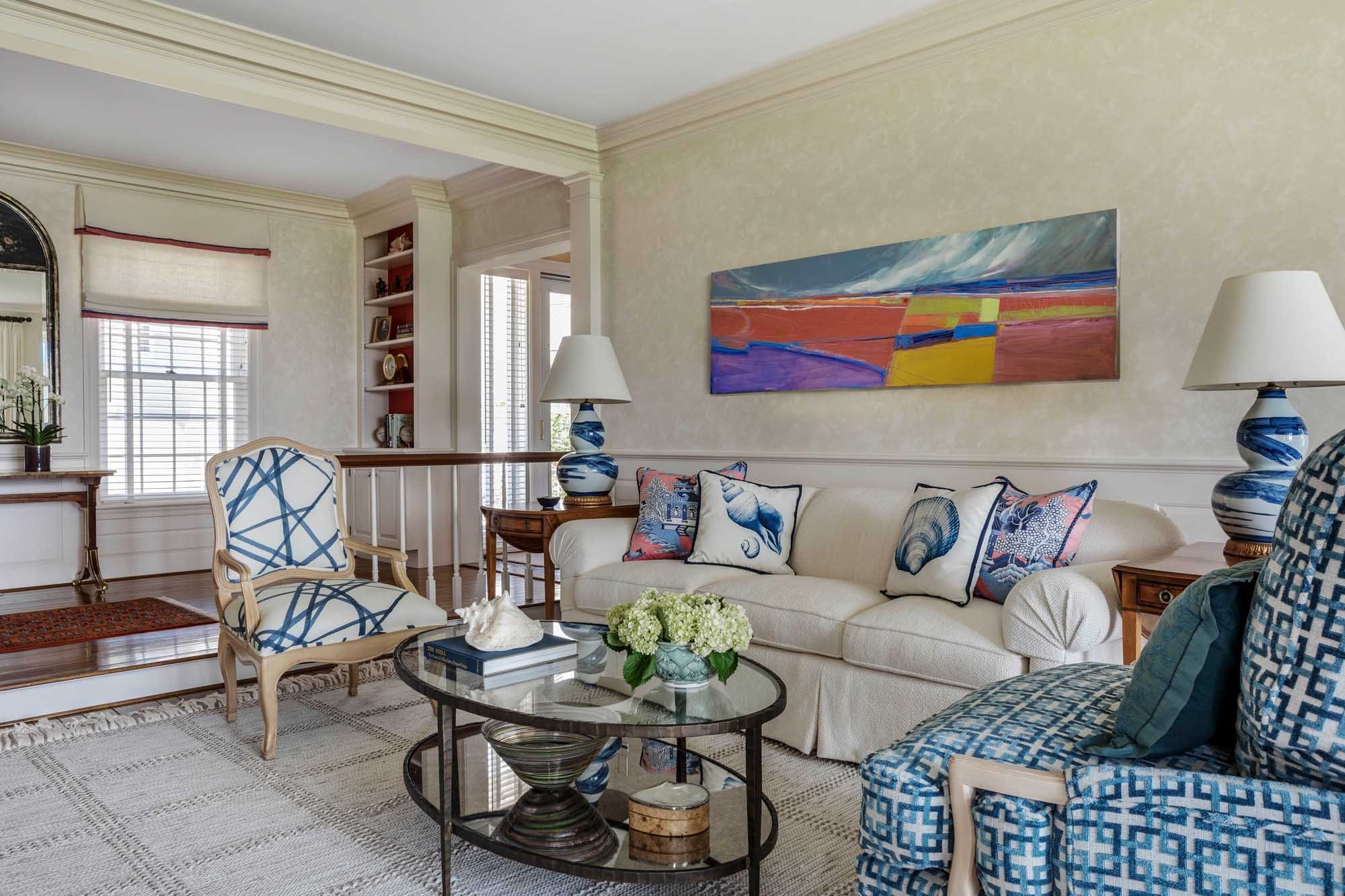Wellness Conversations: Are Comfort and Sustainability Compatible?
We like to think of ourselves as stewards of our fragile planet and that we are mindful of sustainable practices in our interior design projects. But are comfort and sustainability compatible? We believe that sustainability and comfort can co-exist in luxury settings.
One way we practice sustainability is through preservation and thoughtful design choices such as sourcing vintage and antique pieces. Whenever we can save existing millwork and refresh it, we are being cognizant of the environment. When selecting new furnishings, we recommend custom pieces that will become heirlooms like the dining room table created for this Boston project pictured above. The demilune pieces on either side of the window are antiques—previously loved items to be cherished by a new generation. In the project below, we reupholstered a sofa and a chair, extending the life of the furnishings and preventing yet more items from a landfill. We are not fans of fast furniture, preferring high-quality items, often made-to-order.
In our Cape Cod project, we used beautiful items our client already owned and sourced antiques like the end tables and rug in front of the console table. There are reasons these items have lasted a century or more.
INVISIBLE COMFORT
There are also important elements of comfort in a home that we feel but don’t see when systems are working properly. Good ventilation, air quality controls, and smart energy consumption are all elements that architects and builders consider when renovating an older house or constructing a new home.
“In architecture, ‘comfortable’ and ‘sustainable’ are sometimes synonymous! To feel comfortable, a room should be well-built, properly insulated, and adequately ventilated. Each of these concepts is critical to a sustainably designed space,” explains Liz Cahill, Partner at Albert Righter and Tittman Architects. “However, the word ‘sustainable’ can mean many things. In design and building, it’s about material selections and the carbon footprint of those materials. It’s about the conservation and generation of energy. It’s also about creating indoor spaces with fresh air, free of chemicals, which are comfortable and healthy for their inhabitants.”
What clients need to realize is that our climate is changing and building codes are changing, too. At DADI, we want to bring awareness to the choices that are available when designing spaces. There are beautiful and healthy alternatives for fabrics, paint, and flooring, among other materials. In the past, choosing eco-friendly materials was costlier than traditional materials, but the gap has steadily been narrowing. We hope these conversations will become the norm and not just for a select few who care about “green” practices. Our health and wellness — not just the health of the Earth — are at stake.
“Choosing materials without VOCs or formaldehyde keep those types of toxic substances out of our homes and out of our lungs,” says Cahill. Using healthier products keeps toxins out of our water as well.
AND FINALLY…
Another way we like to contribute to keeping pollutants out of the air: choosing local artisans and artists for projects. There are beautiful items made all over the world, but shipping and storing those items can be costly to the ecosystem. It’s another benefit of our single installation policy and the Big Reveal.
We also love that our fondness for antiques helps the planet. Take a peek into the Butler’s pantry at the Gambrel Shingle Style featuring refurbished wood, original to the house, vintage plates and serving pieces, and a light fixture made from antique pieces.



